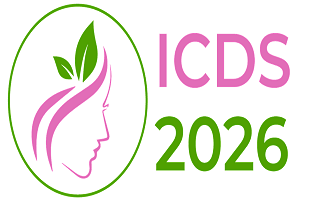3rd International Conference on
Dermatology & Skincare
April 16-17, 2026 | Chicago, USA

Address: 9300 Bryn Mawr Avenue, Rosemont, IL 60018, United States
ICDS 2026

Fubama skin health, Uganda
Title : Epidermolysis Bulosa
Abstract:
A chronic sub epidermal bullous disease associated with autoimmunity to the type VII collagen with the anchoring fibrils in the basement membrane zone.
Group of rare diseases that cause easy blistering of the skin and mucous membranes, tears, sores and blisters in the skin that happen when something rubs or bumps the skin.
Basically group of inherited bullous disorders characterized by blister formation in response to mechanical trauma.
STATISTICS ABOUT EB IN AFRICA
People with EB share the lifelong challenge of extremely fragile skin that blisters and tears from minor injuries, minor friction or trauma.
In Uganda basically 9 patients every after 6 months are identified with EB that is in specialized hospitals and basically numbers being the same in East African countries.
It’s basically inherited skin condition and of four types.
- Mechano – Bullous presentation which is basically a non – inflammatory blistering eruption with acral distribution that heals with scaring and milia formation.
- The Bullous pemphigoid like presentation. Presents with bullous.
- Cicatricial pemphigoid like presentation with prominent mucosal involvement erosions and scaring in the mouth, esophagus, conjunctiva, anus and vagina.
- The Iga bullous dermatosis like presentation show vesicles arranged in an annular fashion that are reminiscent of linear Iga bullous dermatosis, DH or CBDC.
On addition to that there could be other involvement in EB for example
- Cancer in EB
- EB and the eye.
CAUSES OF EB
EB is basically
an inherited skin disease that is autoimmune.
Most people who have epidermolysis
inherit the gene from one or both of their parents. The gene mutation changes how the body makes
proteins that help the skin bind together and remain strong. If you have
epidermolysis bullosa, one of these proteins does not form correctly.
Epidermolysis bullosa symptoms include:
· Fragile skin that blisters easily, especially on the palms and feet
· Nails that are thick or unformed
· Blisters inside the mouth and throat
· Scalp blistering and hair loss (scarring alopecia)
· Skin that looks thin
· Tiny pimple-like bumps (milia)
· Dental problems, such as tooth decay
· Difficulty swallowing
· Itchy, painful skin
DIAGNOSIS
-
The
Tzanck Smear is the the first test performed.
It detects herpes infection (Multi nucleated giant cells) and non-infectious
pustular eruptions (eosinophils, neutrophils).
-
Genetic
testing.
identifies mutations to confirm the specific type of EB and guide treatment
MANAGEMENT
Patients with EB should be managed with a multi-disciplinary team approach including a dermatologist, occupational therapist, nutritionist, social worker, wound care nurse.
Management is primarily supportive and includes prevention of blisters, pain management and controlling infection, providing adequate nutrition, anticipating and treating complications such as joint contractive and skin cancer and also ensuring emotional social and financial support for the patient and family.
Caregivers for newborns, infants and young child require extra precautions to prevent blistering and infection.
Nutritional aspects of diabetic management in EB so important
Symptom control and pain management.
Biography:
DR MUNDU ALLAN ABDULL LATIF graduated from GULU University in Medicine in 2009, then attained a Diploma in Dermatology and Venereology in 2015 at Regional Dermatology training centre Moshi, Tanzania.
Growing up with his dad being a traditional healing herbalist, gained more knowledge in Use of traditional medicine which he always relates to conventional medicine while treating patients.
Have worked in different hospitals both private and government hospitals.
In 2022, was chosen as the best performing dermatologist in the department of Skin and STD at Mulago National Referral hospital.
Currently Dr. Mundu Allan is a Dermatologist at FUBAMA SKIN HEALTH AFRICA as a founding Director working as head of CME Dermatology training programs and head of data collection and research through organizing a number of dermatology camps especially in remote areas of Africa and also doing awareness of skin diseases to people of Africa.
Dr. Mundu Allan Abdull Latif main research interests are autoimmune diseases and Cosmetic Allergy diseases especially on the black skin.
Through awareness programs, DR MUNDU ALLAN ABDULL LATIF has participated on a number of Radio talk shows and a number of T.V health talk shows.
Have been able to open up a dermatology specialized pharmacy and now working on opening up a dermatology Laboratory to help in challenges of lack of electron microscopy and scarce histopathologists in Africa.
